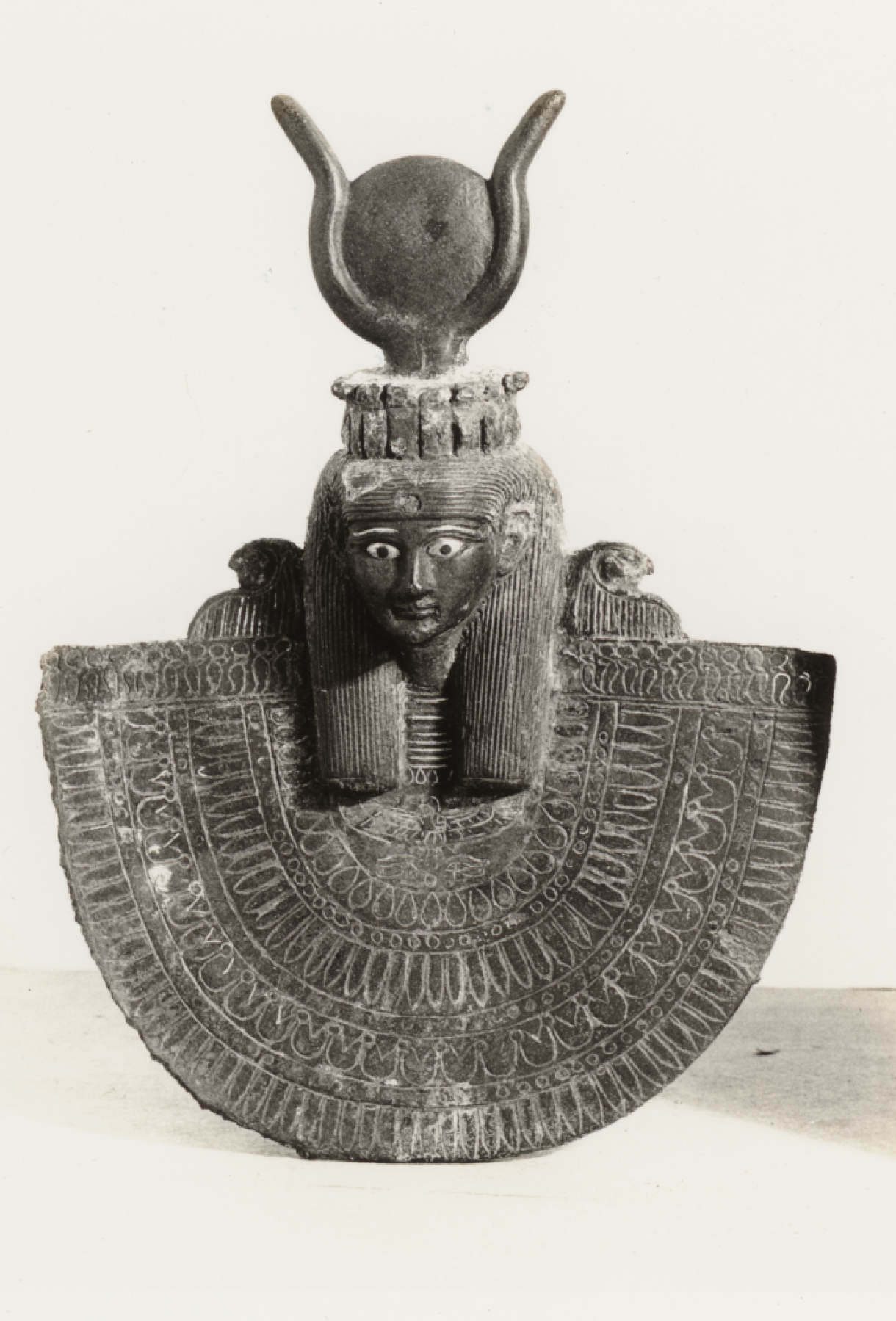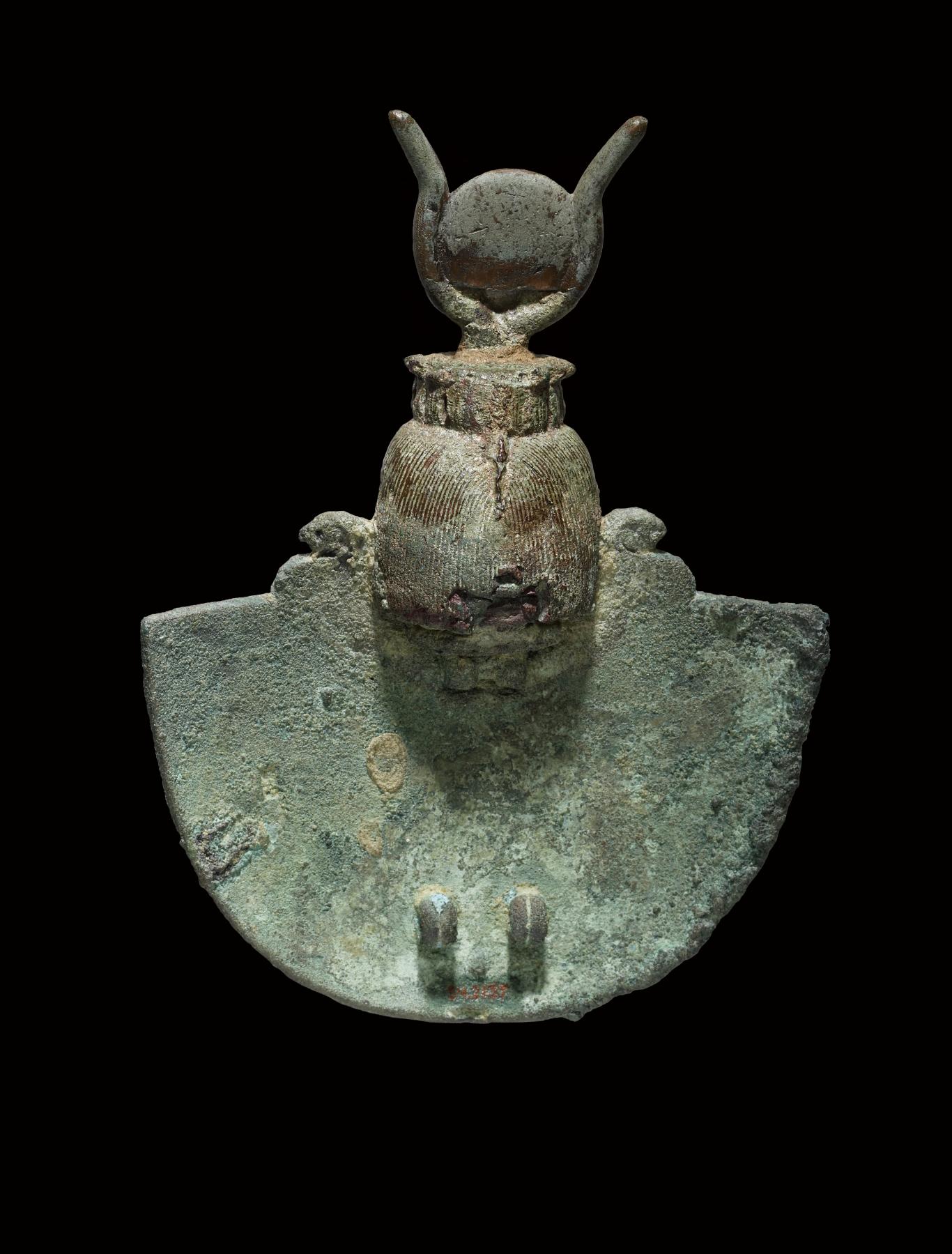Usekh with the Head of a Goddess
(Ancient Egypt and Nubia )
The Egyptians used a variety of special objects to perform the rituals for the gods. The image of a special collar, called an "usekh," surmounted by the head of a god or goddess was such an object (also called an "aegis," originally a Greek term for "shield"). It was used to invoke the gods to guarantee protection, and was also used as an ornament on the bow and stern of a sacred ship.
This bronze "usekh" is combined with the head of a goddess, which is crowned by a "calathos" with "uraei" (cobra serpents), cow horns, and a sun-disk. This crown was originally related to Hathor, but later was also used for Isis. The collar itself displays floral ornaments and has two falcon-head terminals. This heavy bronze "usekh" was probably attached to the bow of a wooden sacred boat.
Provenance
Provenance (from the French provenir, 'to come from/forth') is the chronology of the ownership, custody, or location of a historical object. Learn more about provenance at the Walters.
Sheik Ismail [Sakkara] [date and mode of acquisition unknown]; Henry Walters, Baltimore, 1931, by purchase; Walters Art Museum, 1931, by bequest.
Exhibitions
| 2013-2014 | Egypt’s Mysterious Book of the Faiyum. The Walters Art Museum, Baltimore. |
| 2006-2007 | Daily Magic in Ancient Egypt. The Walters Art Museum, Baltimore. |
Conservation
| Date | Description | Narrative |
|---|---|---|
| 4/30/1957 | Treatment | cleaned |
Geographies
Egypt (Place of Origin)
Measurements
H: 9 5/16 x W: 6 7/8 x D: 2 5/16 in. (23.6 x 17.4 x 5.9 cm)
Credit Line
Acquired by Henry Walters, 1931
Location in Museum
Not on view
Accession Number
In libraries, galleries, museums, and archives, an accession number is a unique identifier assigned to each object in the collection.
In libraries, galleries, museums, and archives, an accession number is a unique identifier assigned to each object in the collection.
54.2137






